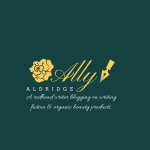Banned Books Week is celebrated every September, bringing together the book community – including writers – to celebrate the freedom of expressing different ideas as well as the freedom to read and thus writers’ freedom to write. In the United States, the Constitution guarantees Freedom of Speech and the Press. Alas, these basic rights and freedoms haven’t stopped different groups calling for books to be removed from libraries, bookstores, and schools. These challenges continue to this day, and thus censorship does too.
Perhaps the reasons for calling to ban a particular book can bring to mind those elements that would give a movie an R rating – violence, profanity, sexuality, drugs, etc. As a writer however, elements and perspectives must be considered as to whether they serve a purpose to the story, no matter how controversial or unpopular. Plus as a reader, one must take into account where and when the book was written, who for, and why. Because the simple truth is when a group or the majority finds anything taboo in a book they will call for it to be removed from shelves.
Banning books is nothing new either. From Ancient China to Elizabethan England to Nazi Germany, there have been challenges and even book burnings! Now certainly when living under an absolute monarch or a dictatorship being a writer is dangerous because written words could reach to the masses – in praise of the authoritarian regime or against it. But that hasn’t stopped brave souls to fight for their rights, and nor should it. And the sad truth is even in democracies there are attempts to control the flow of ideas, to restrict them or destroy them outright.
Sometimes books are challenged not because of their content but who the author is. Take the Red Scare –writers were blacklisted by publishers and in Hollywood for their political beliefs. Even today when writers and artists are convicted of crimes or caught in scandals, censors are put on promoting their work. Don’t get me wrong; anyone truly guilty of a crime should face justice. But having worked in a public library for over five years, I know libraries must serve ALL members of the community, and censorship goes against this mission, and against creativity.
Writers dream of their work being read and enjoyed by many. Reading is just as important to writers because it enables them to tell stories better. Just as a writer would want their colleagues to read and review their work, they must do the same for them. They can be checked out of a library or purchased. Sometimes one can get an inscription from the author, making their copy special. (To see my most recent post on my inscribed collection, click here). Writers are supporting one another, as are readers, teachers, librarians, booksellers and publishers.
We’re all in this together,supporting one another and promoting intellectual and creative freedom for all humanity, the right to read and write what we choose to. That’s what Banned Books Week is all about.
Further Reading
- About Banned Books Week.
- American Library Association. Banned Books Week.

Publisher: Mockingbird Lane Press
Available in Paperback, Kindle, and Nook:
Amazon | Barnes& Noble | Books a Million | Goodreads
The cover art is available at Deviant Art

Andrew’s Social Media Links:
Facebook | Twitter | YouTube | Tumblr | Website
If you have enjoyed this, you may also like:
- YA Author Spotlight!
- My Myth of Mermaids and Poem – Siren’s Song
- How to win a writing contest
- I need your help!



Thank you for this opportunity!
LikeLiked by 1 person
No, thank you. You are one of my favourite bloggers and such a supportive member of the #writingcommunity x
LikeLiked by 1 person
You’re welcome! My pleasure!
LikeLiked by 1 person
Great post, Andrew. There’s always gonna be haters in the publishing business that seem to stay stuck in their old ways. Even JK Rowling’s books were attempted to be banned in America’s Bible belt. Go figure. Cheers!
LikeLiked by 2 people
Well done, Andrew.
LikeLiked by 2 people
Nice to see Andrew over hear with this interesting post. I am currently reading Fahrenheit 451 so this topic is close to my heart at the moment.
LikeLiked by 2 people